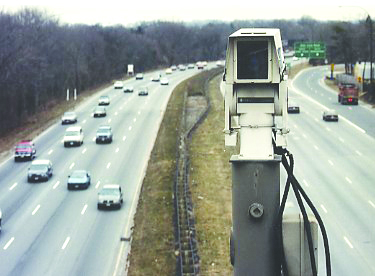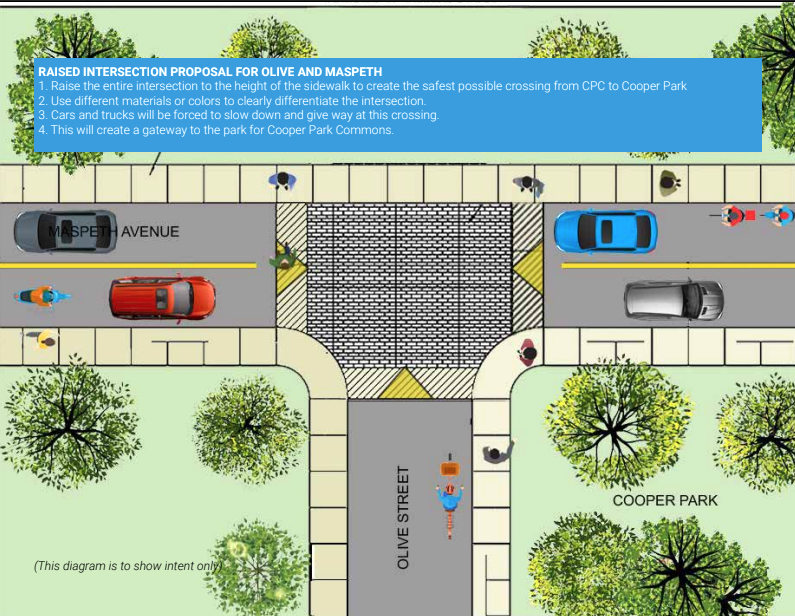Pol Position: Watch your speed, cameras on 24/7
Representatives up in Albany recently agreed to extend the speed camera program in New York City for the next three years. As part of the agreement, speed cameras citywide will now remain operational 24 hours a day, seven days a week.
Speed cameras have proven to be a useful tool in reducing speeding within the 750 school zones they are located, however, New York State law previously limited the hours of operation to 6 a.m. and 10 p.m. on weekdays.
According to a report by Transportation Alternatives, 59 percent of all traffic fatalities in New York City occurred during the hours when the cameras were turned off.
Hall was walking along Linden Boulevard when a Ford Mustang GT came speeding down the road, hitting the pedestrian and knocking him unconscious, before speeding off. Hall suffered from severe head trauma and despite the best efforts of neighbors, he was declared dead at the scene.
“The data speaks for itself: speed cameras save lives,” Rodriguez said in a statement following the decision by state lawmakers. “With the majority of traffic fatalities now happening overnights and on weekends, expanding the automated enforcement hours of operation is a huge accomplishment for the City and for the safety of New Yorkers… The DOT will continue working around the clock to reduce road fatalities throughout the city and ensure we’re improving traffic safety in historically underinvested communities.”
The effort to expand the speed camera program also followed a push by the Adams administration, who has continued to put pressure on the state to make NYC streets safer.
“Make no mistake about it, this is a major victory for New Yorkers that will save lives and help stem the tide of traffic violence that has taken too many,” New York City Mayor Eric Adams said in a statement. “We are investing a historic $900 million in street safety and redesigning 1,000 intersections across the City – but we cannot do this alone, and my team and I have been working closely with our partners in Albany for months to get this done.”
Adams indicated that speed cameras are proven to be effective at discouraging repeat speeding behavior, citing how in 2021, a majority of vehicles that received a violation, did not receive a second.
However, according to a recent article from Streetsblog NYC, the agreement was a last-minute effort corralled by Sen. Andrew Gounardes and Assemblywoman Deborah Glick to get what they could out of wavering colleagues before the deadline.
As a result, the bill was watered-down, stripping away additional tools to help reduce reckless driving, including a requirement that would allow the DMV to notify insurance companies whenever a vehicle gets five school-zone tickets in a two-year span.
The article also indicates that a last-minute attempt by City Hall, to widen the radius around which cameras could be placed, forced lawmakers to make a difficult decision.
Glick told Streetsblog that while officials said the cameras would cover most of the City, “they came back just this week to say, ‘well, we think that’s not 100 percent accurate. We think there are gaps.’ You can’t spring something like that at the 11th hour when we’re trying to move a very critical piece.”
Combined with internal concerns about the bill, she and Gounardes ultimately decided that the top priority was extending the hours of operation to keep cameras on 24/7.
This also resulted in the removal of provisions that would suspend registration for drivers given six camera-issued tickets within a two-year span, escalating fines after receiving five tickets, and eliminate current provisions preventing camera-issued speeding violations from becoming part of a driver’s record.
However, the provisions removed from the bill were not part of the Adams administration’s push. As Glick indicates in the article, they were ultimately removed to help make the proposal an easier pill to swallow.
“You have to make decisions whether that provision is the hill you’re going to die on,” Glick told Streetsblog NYC.
In the end, Albany managed to reach a consensus that more than doubles the reach of speed cameras and will keep them running around the clock.










